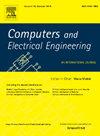The stochastic economic model for integrated energy system with carbon mechanism
IF 4
3区 计算机科学
Q1 COMPUTER SCIENCE, HARDWARE & ARCHITECTURE
引用次数: 0
Abstract
As energy conversion technology progresses and evolves, interconnected energy networks with diverse attributes have emerged. The traditional model of energy networks has changed from isolated operation to the combined optimization and scheduling of integrated energy system. To efficiently decrease carbon dioxide emissions, it is necessary to vigorously develop green energy and fully consider carbon emission factors. To tackle the aforementioned issue, this paper proposes a stochastic optimal economic model within the carbon mechanism for integrated energy system. The model incorporates carbon trading, the volatility of renewable energy, and the deviation of real-time electricity prices into the objective function. By applying convex and robust optimization approaches, the primary problem is divided into the master problem and subproblem characterized by mixed-integer linearity, subsequently addressed iteratively. Convex optimization is mainly used to transform the deviation term of electricity price, and robust optimization is employed to find out the economically optimal scheme based on the worst scenario. Simulation results indicate that as the uncertainty in electricity market prices decreases, the electricity market cost can be reduced by up to 22.28 %, while the total cost of the integrated energy system can be reduced by up to 8.56 %. Finally, in the context of the carbon mechanism, the proposed stochastic optimization model was validated through simulations.
含碳机制的综合能源系统随机经济模型
随着能源转换技术的进步和发展,多种属性的互联能源网络应运而生。传统的能源网络运行模式已经从孤立运行模式转变为综合能源系统的联合优化调度模式。要有效减少二氧化碳排放,必须大力发展绿色能源,充分考虑碳排放因素。为了解决上述问题,本文提出了综合能源系统碳机制下的随机最优经济模型。该模型将碳交易、可再生能源波动性、实时电价偏差等因素纳入目标函数。采用凸优化和鲁棒优化方法,将主问题分为主问题和混合整数线性特征的子问题,然后迭代求解。主要采用凸优化对电价偏差项进行变换,采用鲁棒优化在最坏情况下寻找经济最优方案。仿真结果表明,随着电力市场价格不确定性的降低,电力市场成本最高可降低22.28%,综合能源系统总成本最高可降低8.56%。最后,在碳机制的背景下,通过仿真验证了所提出的随机优化模型。
本文章由计算机程序翻译,如有差异,请以英文原文为准。
求助全文
约1分钟内获得全文
求助全文
来源期刊

Computers & Electrical Engineering
工程技术-工程:电子与电气
CiteScore
9.20
自引率
7.00%
发文量
661
审稿时长
47 days
期刊介绍:
The impact of computers has nowhere been more revolutionary than in electrical engineering. The design, analysis, and operation of electrical and electronic systems are now dominated by computers, a transformation that has been motivated by the natural ease of interface between computers and electrical systems, and the promise of spectacular improvements in speed and efficiency.
Published since 1973, Computers & Electrical Engineering provides rapid publication of topical research into the integration of computer technology and computational techniques with electrical and electronic systems. The journal publishes papers featuring novel implementations of computers and computational techniques in areas like signal and image processing, high-performance computing, parallel processing, and communications. Special attention will be paid to papers describing innovative architectures, algorithms, and software tools.
 求助内容:
求助内容: 应助结果提醒方式:
应助结果提醒方式:


